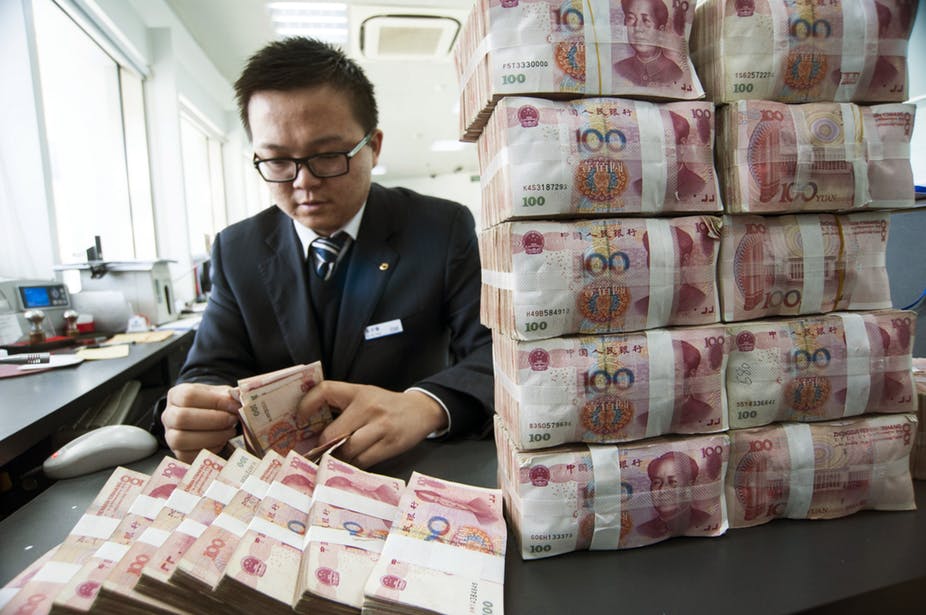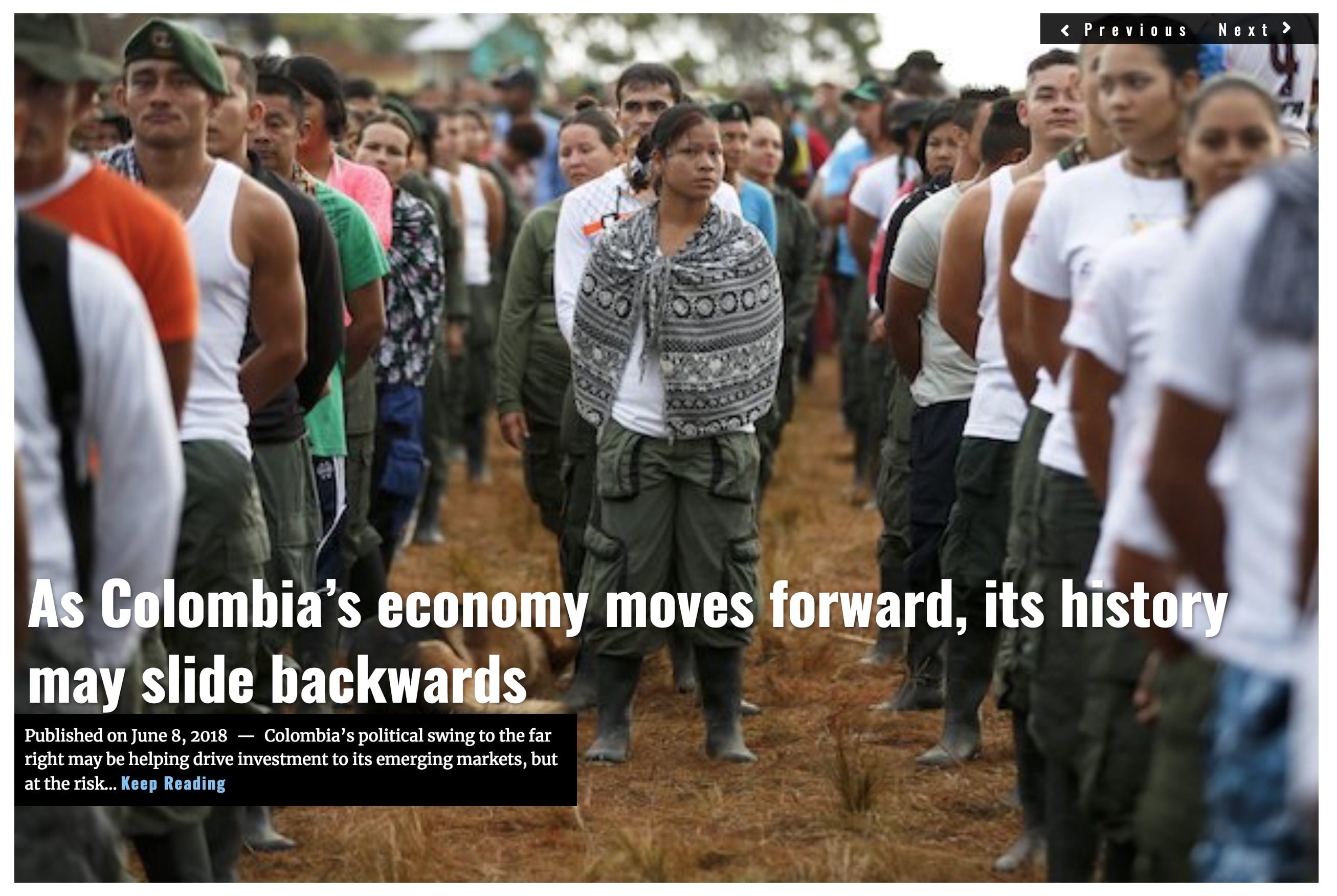With Chinese investment and influence in Latin America on the rise, NATO and the U.S. welcomed Colombia into NATO’s global partnership, the first Latin American country to join.
In May, Colombian President Juan Manuel Santos announced that Colombia would join NATO as a “global partner.” President Santos closed the deal in Brussels, at a May 31st press conference with NATO Secretary General Jens Stoltenberg.
“We are the first country in Latin America to have this relationship with NATO. It is a great privilege and we would like to thank you Secretary General for this,” said Santos. “I think this is the beginning of a wonderful relationship between Colombia and NATO, to the benefit of our armed forces which deserve our help and support.”
At the same time, it was announced that Colombia was joining the Organization for Cooperation and Economic Development (OCED), another Marshal Plan era intergovernmental partnership meant to coordinate economic development in response to the Cold War.
The move wasn’t a complete surprise, as Colombia has previously partnered with NATO in intelligence-sharing, military-training exercises, humanitarian interventions, and has participated in the war on terror. Colombia also shares a long history with the United States, particularly the U.S. military in fighting the drug trade, global terrorism and communism. The “Colombian Battalion” fought in bloody battles against the Chinese in the Korean War alongside the U.S. 7th Infantry and 25th Infantry Divisions, the only Latin American troops to fight, and were considered by one war correspondent to be “the bravest men I have ever seen.” Colombian Special Forces are some of the best in the world, taking on FARC rebels, drug lords, Somali pirates and the Taliban.
Colombia’s military is one of the most powerful in Latin America, making it a strong candidate for work with NATO. When pitching the increased partnership with his people, Santos reassured his people that Colombia will not “participate in NATO military operations.”
As a global partner, however, Colombia is not bound by Article 5 of NATO’s original treaty which asserts that an attack on one member is an attack on all members. This means that Colombia’s role in NATO differs slightly from most members. According to the NATO website, a global partner cooperates with NATO “in areas of mutual interest, including emerging security challenges” and “military areas.”
Great meeting President @JuanManSantos today. A first in many ways: The first Head of State and Government I receive at #NATO's new HQ, the first Head of State from Latin America I receive, the first Nobel laureate I receive & Colombia is NATO's first partner from Latin America. pic.twitter.com/gGoz1dpaLw
— Jens Stoltenberg (@jensstoltenberg) May 31, 2018
Some have criticized the inclusion of Colombia in the NATO circle as enabling or turning a blind eye to corruption, and concerns have been raised about relations between the U.S. and Colombia now unfolding as a part of a multi-national, militarized organization.
Some, including officials in neighboring Venezuela, also fear that an increased NATO presence in Latin America may deter regional unity by cancelling out regional alliances.
Las @FuerzasMilCol en relación con el ingreso de #Colombia en calidad de Socio Global a la Organización del Tratado del Atlántico Norte @NATO se permiten comunicar que –>https://t.co/9bD97uRcFh pic.twitter.com/ydhFfA2zV9
— Mindefensa (@mindefensa) June 1, 2018
While talks of including Colombia in NATO and OCED have been going on for years, it appears as though the current international economic climate has finally opened a window for Colombia’s inclusion. The fact that Colombia has now been invited to such organizations should not be taken without a grain of salt.
Before his presidency, Donald Trump had often said that NATO was “obsolete.” By January 2017, President Trump said that NATO was “no longer obsolete” or rather, that it was obsolete, but still “very important to [him].”
“I took such heat, when I said NATO was obsolete,” Trump told the Times of London in an interview. “A lot of these countries aren’t paying what they’re supposed to be paying, which I think is very unfair to the United States … With that being said, NATO is very important to me.”
President Santos’ May announcement of Colombia’s new relationship with NATO and OCED would come soon after a visit from then-US Secretary of State Rex Tillerson in February and Vice President Mike Pence in April.
Yet, some experts have questioned that since Colombia and the U.S. have had close connections for years, why has Colombia been invited into the fold only now?
Enter the Dragon
In January 2018, just before the visits of Rex Tillerson and Mike Pence, Chinese Foreign Minister Wang Yi had stated in an interview that China hopes to make China-Latin American cooperation “a new model of South-South cooperation.” He added that Latin America is the second-largest destination for Chinese overseas investment. Since 2005, two Chinese banks have lent some $150 billion in loan commitments to Latin American states.
In January, an op-ed in Bloomberg titled, “China is Boosting Ties in Latin America. Trump Should Be Worried” asserted:
“The U.S. in recent years has lost its status to China as the top trading partner in parts of Latin America, such as copper-rich Chile and agriculture and mining powerhouse Brazil. Now, all the uncertainty surrounding U.S. President Donald Trump’s plans – from building a southern border wall, to re-freezing Cuba relations and exiting the Paris climate change accord supported by Latin America – could give an opening for China to seize more ground in the region.”
Rex Tillerson also warned in January, “Today, China is gaining a foothold in Latin America. It is using economic statecraft to pull the region into its orbit … The question is: At what price?”
China is also the top trading partner for Brazil, Chile and Peru. Through its “One Belt, One Road” initiative, China is indeed making closer and knottier economic and political ties in a region in which the United States has historically enjoyed very strong influence.
With China investing heavily in Latin America, the United States’ hegemony over the region may be at stake. The Trump administration feels this threat, as its national security strategy accuses China of attempting to “challenge American power” by seeking “to pull the region into its orbit through state-led investment and loans.”

Colombia’s recent inclusion into NATO is no coincidence. Through shoring up the United States’ relationship with Colombia, the Trump administration may try to regain composure in the region.
Fears that China’s influence will necessarily antagonize American interests may be unfounded, however. China’s contributions to Latin American infrastructure may actually make trade and investment easier for firms in the United States. And even if the region experiences another bust like Venezuela’s, China has the foreign reserves to absorb such losses.
[Title image: Mauricio Duenas Castaneda / EPA]
LIMA CHARLIE NEWS
Lima Charlie provides global news, insight & analysis by military veterans and service members Worldwide.
For up-to-date news, please follow us on twitter at @LimaCharlieNews
In case you missed it:

![Image NATO's embrace of Colombia signals Western insecurities about China in Latin America [Lima Charlie News][Photo: Mauricio Duenas Castaneda / EPA]](https://limacharlienews.com/wp-content/uploads/2018/06/NATOs-embrace-of-Colombia-signals-Western-insecurities-about-China-in-Latin-America.jpg)



![Blossoming Russo-Turkish alliance leaves U.S., NATO behind [Lima Charlie News]](https://limacharlienews.com/wp-content/uploads/2019/07/Russia-Turkey-alliance-leaves-U.S.-NATO-behind-480x384.png)
![Image Russia and China’s 'hybrid warfare' - Does the West even care? [Lima Charlie News]](https://limacharlienews.com/wp-content/uploads/2019/04/Russia-China-Hybrid-Warfare-02-480x384.png)
![image NATO’s value can’t be measured in nickels and dimes [Lima Charlie News]](https://limacharlienews.com/wp-content/uploads/2019/04/NATO-Trump-0005-480x384.png)



![Image Memorial Day may soon be a remembrance of democracy and those who had the courage to defend it [Lima Charlie News]](https://limacharlienews.com/wp-content/uploads/2018/05/Memorial-Day-may-soon-be-a-remembrance-of-democracy-and-those-who-had-the-courage-to-defend-it-Lima-Charlie-News-480x384.png)
![The Mind of Bolton - AUMF and the New Iran War [Lima Charlie News]](https://limacharlienews.com/wp-content/uploads/2019/05/Inside-the-mind-of-Bolton-Lima-Charlie-News-main-01-480x384.png)
![Blossoming Russo-Turkish alliance leaves U.S., NATO behind [Lima Charlie News]](https://limacharlienews.com/wp-content/uploads/2019/07/Russia-Turkey-alliance-leaves-U.S.-NATO-behind-150x100.png)
![Image Russia and China’s 'hybrid warfare' - Does the West even care? [Lima Charlie News]](https://limacharlienews.com/wp-content/uploads/2019/04/Russia-China-Hybrid-Warfare-02-150x100.png)